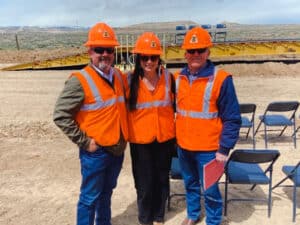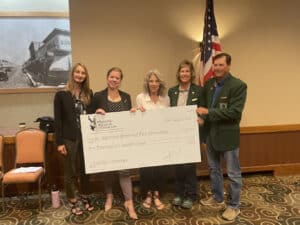Whether sitting in your favorite coffee shop or scrolling your social media feed, you probably have seen the headlines about the wildlife that got caught in the crosshairs of one of the worst Wyoming winters in recorded history.
This comes as no surprise, of course, as you probably had to shovel yourself out of your house, pull a neighbor out of the ditch, and contend with the bitter-cold temperatures like the rest of us.
The loss of wildlife caused by Mother Nature’s uncommonly harsh winter this year is tragic to witness. Photos of disease-stricken pronghorn, elk lining I-80, and mule deer who never woke up after they expended the last of their body fat reserves are heartbreaking.
Like all Wyomingites who pick themselves up by their bootstraps, people like you and me can roll up our sleeves for wildlife, use our voices for good, and put our spare funds to work to make our wildlife more resilient to, not only the next winter but all of the challenges that face our landscape these days.
Not to mention, this moisture on the previously drought-stricken landscape and reduced mouths on habitat allow for forage to grow lush and rich in nutrients. If you look back through time, deer, elk, and pronghorn populations have always rebounded from harsh winters with higher productivity and healthier herds.
That’s why we’re embarking on Operation Rebound to help these species bounce back from the 2022-2023 winterkill as quickly as possible.
Here is your checklist of things you can do to make long-term impacts on Wyoming’s wildlife:
-
Buy a Wildlife Conservation Plate
If you live in Wyoming and drive a vehicle, a great first step is to put a Wildlife Conservation Plate on your vehicle to support wildlife crossings. These plates were a concerted effort at the 2018 Legislative Session from WWF and our partners.

For instance, Wyoming is in the midst of the Dry Piney Connectivity Project where their efforts will help the Wyoming Range mule deer get around in the winter without getting struck by vehicles. There are more than 40 high-priority wildlife crossings projects identified by the WRIIT just like the Dry Piney construction we still need to fund to make a reality. Putting a conservation plate on your vehicle not only makes a small monetary difference but shows others this is important to Wyomingites, as well.
-
Volunteer at a Habitat Project
While being conservative is important while biologists uncover the extent of this winter’s impacts, it’s vital we remember that the number one driver of wildlife populations continues to be habitat, as it always has been.
Simply put, if our wildlife cannot reach food and water, then all other efforts are moot. Conservation organizations, like the Wyoming Wildlife Federation, hold fence modification projects, fence removals, and water improvement projects around the state to improve habitat.
You can also find habitat projects to aid in by giving your local WGFD habitat biologist a call.
This summer, WWF and our partners at WGFD are continuing a 5-year project to modify 17 miles of fence in the Baggs Mule Deer Migration Corridor around the Grizzly Wildlife Habitat Management Area. This year’s project, June 24th and 25th is a great example of a project people can get involved with by putting boots on the ground for wildlife they care about.
If you would like to join, email Sam Lockwood for details at Slockwood@wyomingwildlife.org or via phone at (435) 729-0951.
-
Use Your Voice To Advocate

Decision makers from your local representative to county commissioners need to know you care about ensuring wildlife has a place in the countryside in Wyoming. Whether you advocate for bills that give money to wildlife crossings or lend comments for smart development of Wyoming’s wild lands, it’s important to be involved. Otherwise, you may end up with solar farms, housing developments, and other landscape-altering projects that remove important habitats for wildlife.
There are physical and virtual opportunities to get involved with Wyoming Game and Fish Commission Meetings, as well as Legislative Committee Meetings. These meetings are a great place to learn about wildlife issues with a opportunities to lend your comments.
Click to view the schedule of Wyoming Game & Fish Commission Meetings >>
-
Give To Organizations Doing Good Work
Dive into various nonprofit organizations’ work to identify if they are working specifically on the long-term improvement of wildlife populations in Wyoming. Whether they are actually putting boots on the ground, advocating on your behalf, or organizing the public at large, NGOs are a great way to amplify your impact.
If you would like, you can give to WWF here, but we also encourage you to discover other great partners across the state doing great work for rebounding wildlife populations, as well.
